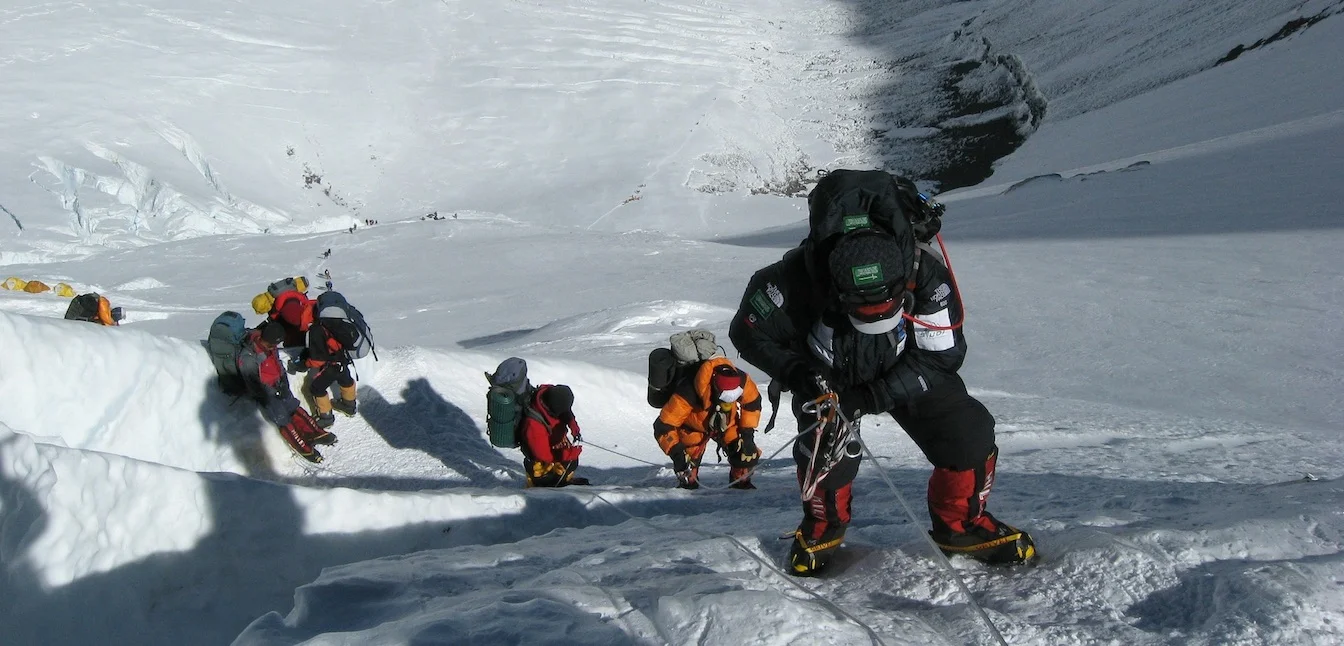The human body is designed to perform at its best at or around sea level where the vast majority of us live. At higher altitudes the concentration of oxygen in the atmosphere decreases, due to lower pressure.
These effects could be noticeable anywhere over 2500 metres (approx. 8000 feet). Some acclimatisation (often also called Acclimation) is usually required for travel above 3500 metres, although the effects of the altitude between 3500 and 5000 metres above sea level (also classified as very high altitude) will vary between people.
One noticeable effect of altitude that anyone taking part in mountaineering may experience in this altitude range is some shortness of breath and difficulty sleeping. Again, different people are affected differently.
At extreme altitude (above 5000 metres) the effects of this can be very severe however, the human body is able to adapt to these higher altitudes.
Above 8000 metres - what has commonly become known as The Death Zone - the human body is not able to function properly due to a lack of oxygen. Supplementary oxygen is commonly used by mountaineers at this altitude. Seldom will you see an image of a climber on Everest or any major Himalayan peak without oxygen.
- Read our Introduction to Mount Everest
- How Many People Have died on Mount Everest?
- Browse a list of books about Mount Everest
In the short term it makes a number of changes to cope. One of the most noticeable is faster breathing, however in truth proper altitude acclimatization takes days or weeks.
"Climb High, Sleep Low".
In order to acclimatize to rising altitude the human body needs to spend more time. It is critical for anyone visiting the mountains to acclimatize properly.
Working your way gradually up a mountain in stages; for example spending time at different altitudes and also descending to sleep at lower altitude will help acclimatize the human body. This has been captured in the mountaineering maxim; "Climb High, Sleep Low".
For long climbs, it makes sense to also have rest days at altitude to allow proper recovery from exertion and acclimatization. As an example when climbing Aconcagua, typically the trip would be of around 20 days which might include a pattern such as;
- Trek to higher altitude
- Acclimatization Hike
- Rest Day
- Trek to higher altitude
- Acclimatization Hike
- Rest Day
High altitude often causes a loss of appetite and thirst. It is crucial as part of acclimatization to ensure you eat properly and particularly drink plenty of water

LATEST BLOG POSTS
I quit the rat-race to live a more adventurous life. This is my journey.

